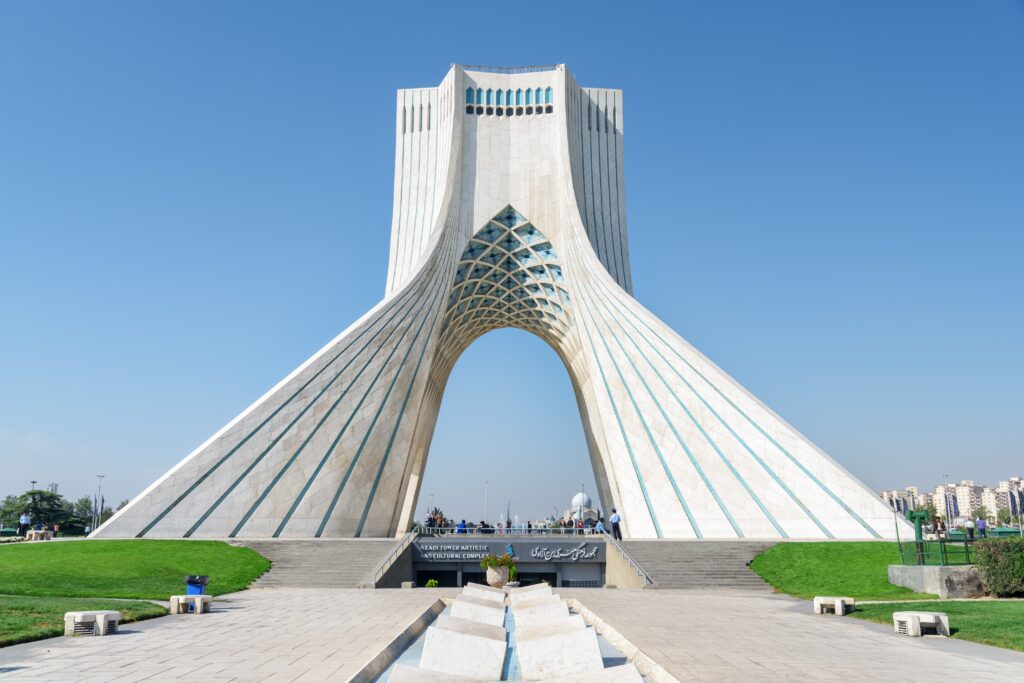Iran now faces a pivotal moment: pursue nuclear weapons or return to negotiations with the West. The stakes are higher than ever, especially with Donald Trump back in power, and time running out for diplomacy.
Iran’s Nuclear Program Origins and Evolution
Iran’s nuclear program began in the 1950s with U.S. support under the “Atoms for Peace” plan. In 1967, Iran installed a 5-megawatt research reactor in Tehran and received weapons-grade uranium from Washington.
In the 1970s, Iran turned to Europe, signing a contract with West Germany’s Siemens to build the Bushehr nuclear plant. Russia completed the plant after the 1979 Islamic Revolution. The discovery of Natanz and Arak nuclear facilities in 2002 triggered global scrutiny and harsh Western sanctions.
The 2015 Joint Comprehensive Plan of Action (JCPOA) briefly cooled tensions. However, Trump’s 2018 withdrawal reignited fears of a nuclear Iran. Tehran responded by gradually violating its commitments, increasing uranium enrichment, and reducing transparency.
Although Iran claims its nuclear activities are peaceful, many fear it is edging closer to developing nuclear weapons. Iranian leaders argue that Islam forbids weapons of mass destruction, but religious decrees can change.
Iran’s Nuclear Ambitions Amid Economic Struggles
Today, Iran enriches uranium to 60%, just a step away from the 90% needed for a nuclear weapon. Western intelligence believes Iran could reach weapons-grade levels within days, using existing ballistic missiles like Khorramshahr and Sejjil to deliver warheads.
Analysts suggest Iran prefers strategic ambiguity rather than openly pursuing nuclear weapons. It uses its nuclear progress as leverage in talks, showing strength without crossing clear lines. A more alarming theory suggests Iran already has a bomb but keeps it hidden as a last resort. Intelligence agencies have not confirmed this claim, and Iran likely fears isolation similar to North Korea.
Economic sanctions have damaged Iran’s economy for over four decades, but the regime endures through strategic patience and alliances. Tehran continues trade with China and Russia, sells sanctioned oil in secret, and finds ways around embargoes. However, inflation, currency collapse, and public unrest are mounting challenges.
Despite political rhetoric, Iran understands that isolation cannot sustain its struggling economy forever. Israel, with its own nuclear arsenal, remains committed to preventing an Iranian bomb under the Begin Doctrine, which inspired preemptive strikes on Iraq in 1981 and Syria in 2007. Iran’s neighbors, especially Saudi Arabia, also oppose a nuclear-armed Tehran.
Europe’s Role in the Nuclear Crisis
Iran’s support for Russia’s war in Ukraine by supplying Shahed drones has strained its relationship with Europe. This move sparked harsher Western retaliation and deepened Tehran’s isolation from the European Union.
Tehran accuses Europe of siding with the United States and sees little incentive to change course. However, the EU could play a crucial role by offering economic incentives in exchange for a renewed nuclear deal.
Europe fears Middle Eastern instability could threaten its own security and economy. Yet Brussels, still influenced by Washington, has failed to provide Tehran independent guarantees to ease sanctions. If negotiations fail and war erupts, Europe will likely oppose military action but remain powerless to prevent it.
Iran’s regional proxies also complicate potential deals. Trump demands that Iran abandon its nuclear program entirely and holds it responsible for attacks by groups like the Houthis. Any new deal must address missiles and militias, not just enrichment levels.
Possible Outcomes and Next Steps
Tehran may reduce uranium enrichment again but is unlikely to cut support for groups like Hezbollah or the Houthis, which serve strategic purposes. Iran’s economy relies heavily on oil exports, and luxury goods or drone sales cannot fill the financial gap.
Iran’s only realistic path forward is negotiation, a process its leaders know well. The regime hopes to survive Trump’s pressure campaign until his term ends. However, time is short. Trump has given Iran two months to reach a deal with binding terms that leave no room for stalling.
If Iran miscalculates and targets U.S. assets or Arab allies, swift retaliation will follow—not just from America, but also from Arab coalitions. Tehran knows Russia won’t intervene in a regional war on its behalf.
Therefore, Iran will likely return to the negotiating table, but this time with less leverage and higher stakes. Tehran may accept a narrower, phased deal that allows its peaceful nuclear program to continue under tighter inspections and firmer guarantees.
However, this new version of JCPOA will come with fewer promises and greater Western mistrust, especially after Trump’s 2018 withdrawal. Tehran wants relief, but only on its own terms. Whether Trump accepts those conditions remains the next geopolitical test.
